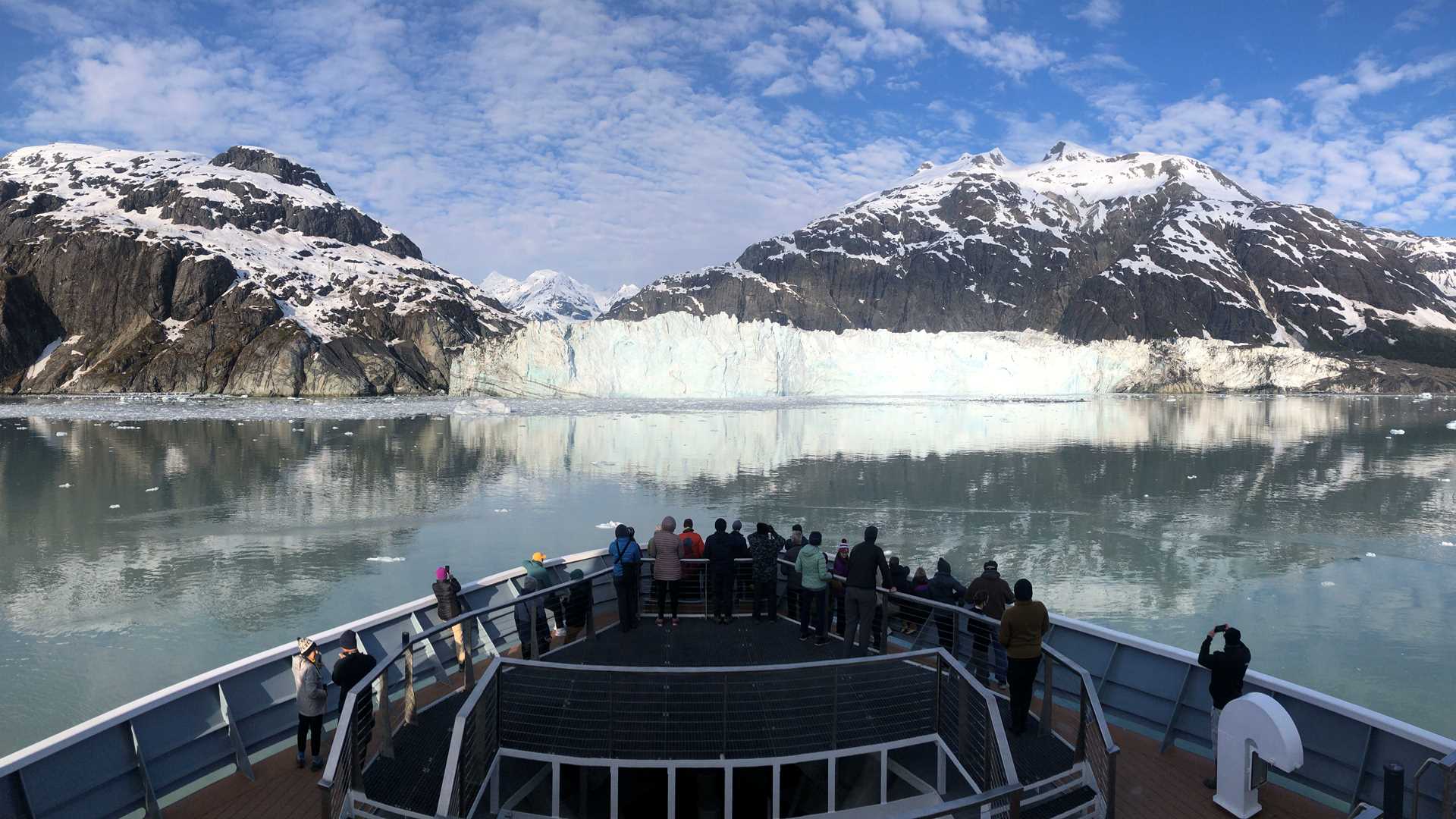Guests rolled out of bed today and turned to see the face of Margerie Glacier in Glacier Bay National Park. The face of the glacier is scattered with crevasses that expose the deep blue color within. Guests admired the half-mile long face of the glacier. Harbor seals, sea otters, and kittiwake gulls rested among the icebergs below.
The clear skies encouraged us to admire the scenery and scout wildlife from the bow. In the afternoon, multiple humpback whales appeared as we cruised a narrow cut, and one breached multiple times. We passed an area called Gloomy Nob where we spotted the teensiest mountain goat many of us have ever seen, probably no older than a few days. A look to the left, and we saw two napping brown bears, arguably enjoying the sunshine more than us. Farther down, we arrived at South Marble Island, home to Steller sea lions, cormorants, gulls, and charismatic tufted puffins.
From Margerie on, the story of Southeast Alaska’s temperate rainforest unfolded as we cruised to the mouth of the bay. As the glaciers receded, they expose new land, colonized by plants and wildlife in a predictable order. This fact led William S. Cooper here in the 1920s to study primary forest succession, and it encouraged him to nominate the area as a National Monument. We ended our evening exploring Bartlett Cove, miles away from Margerie, with walks through the old growth forest that now stands. On shore, we had a chance to visit the big house of the Hoonah peoples who call this land home.
Photographers: Shannon Malone and Nathan Kelley







